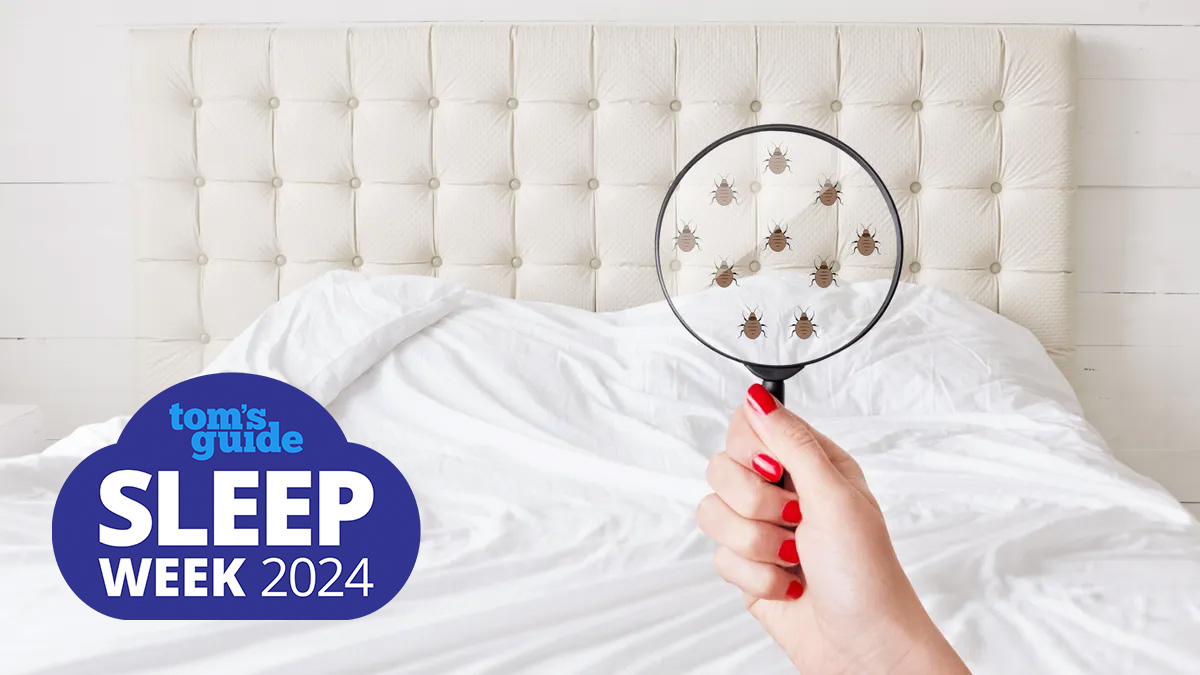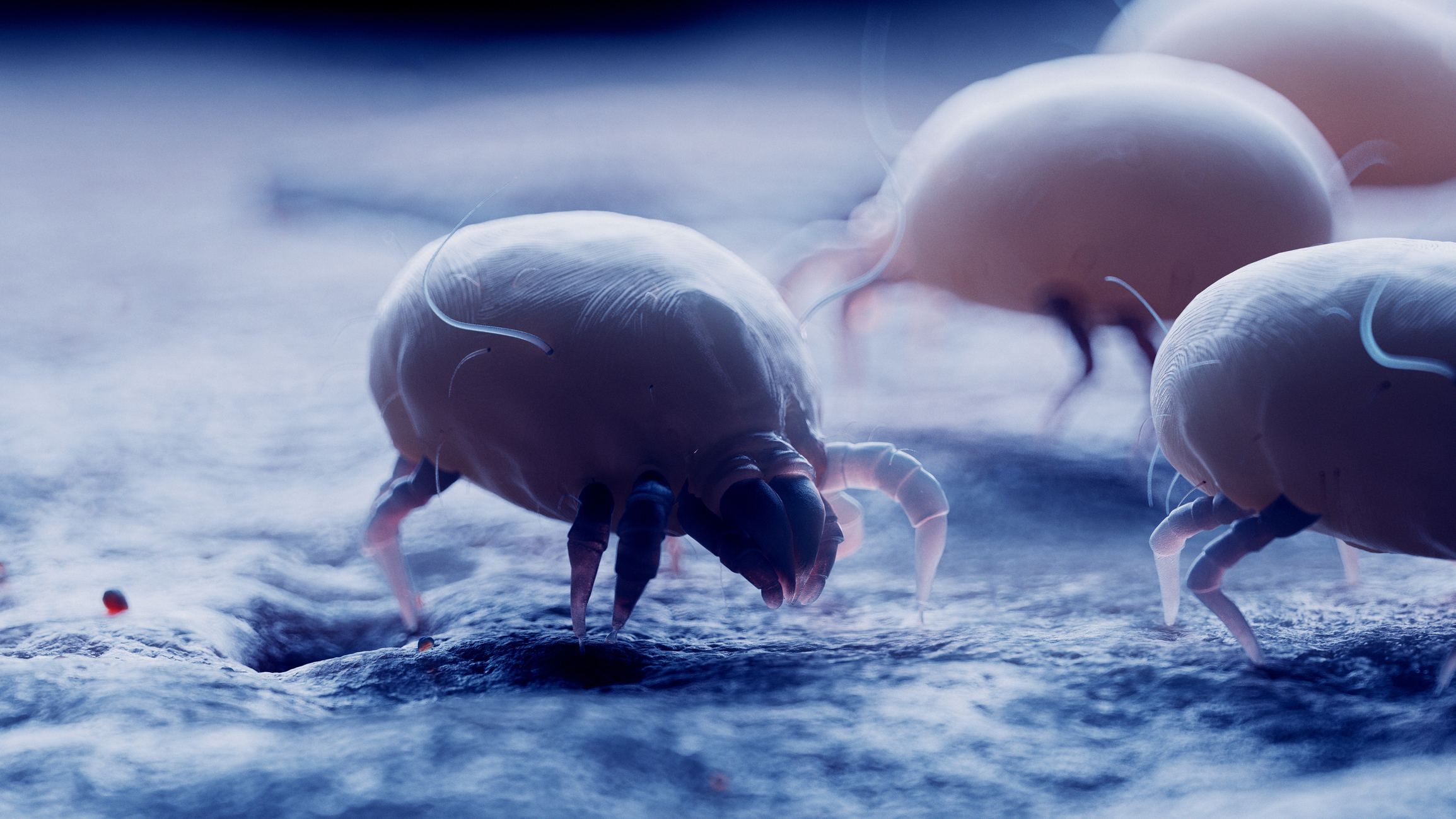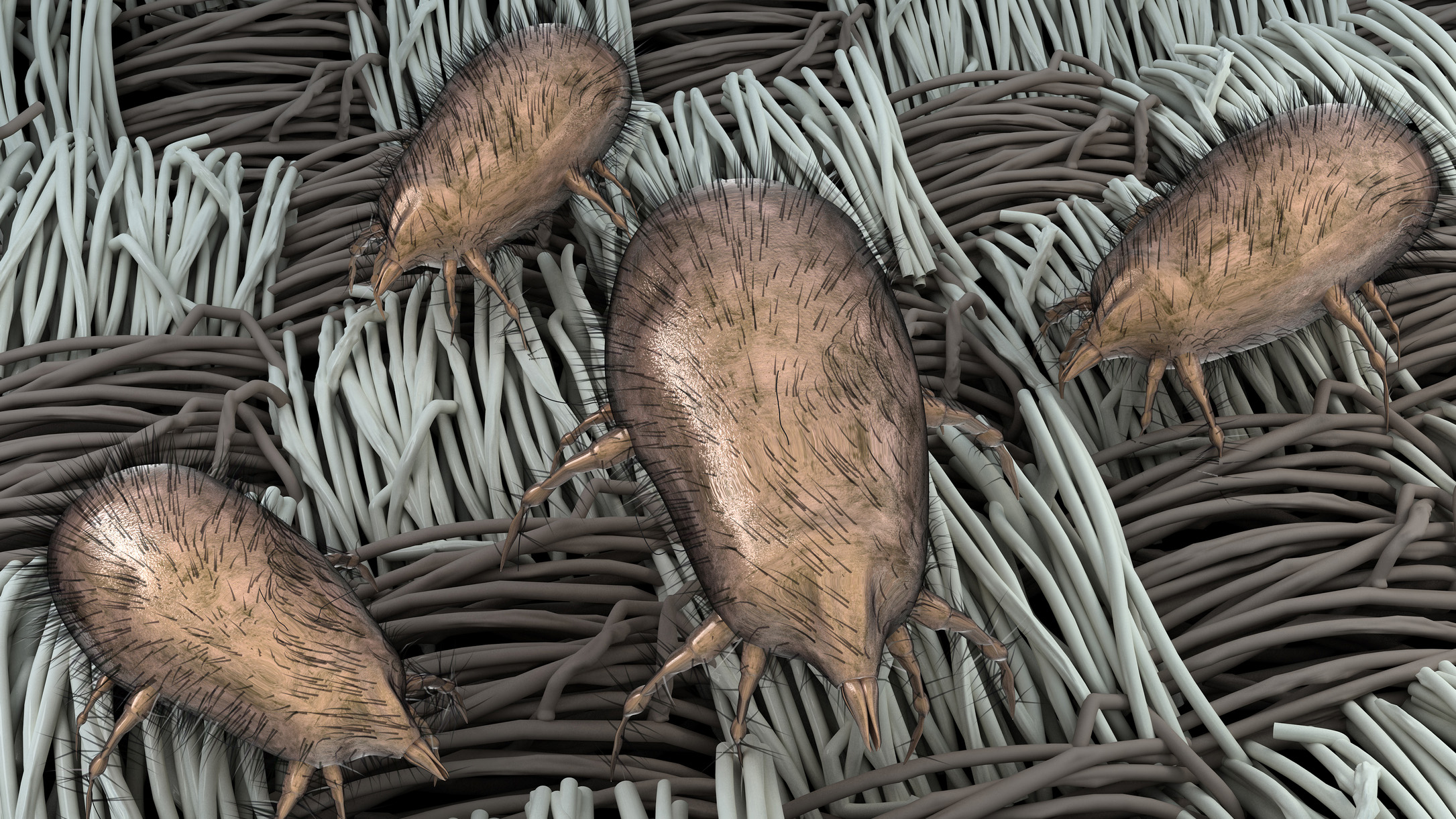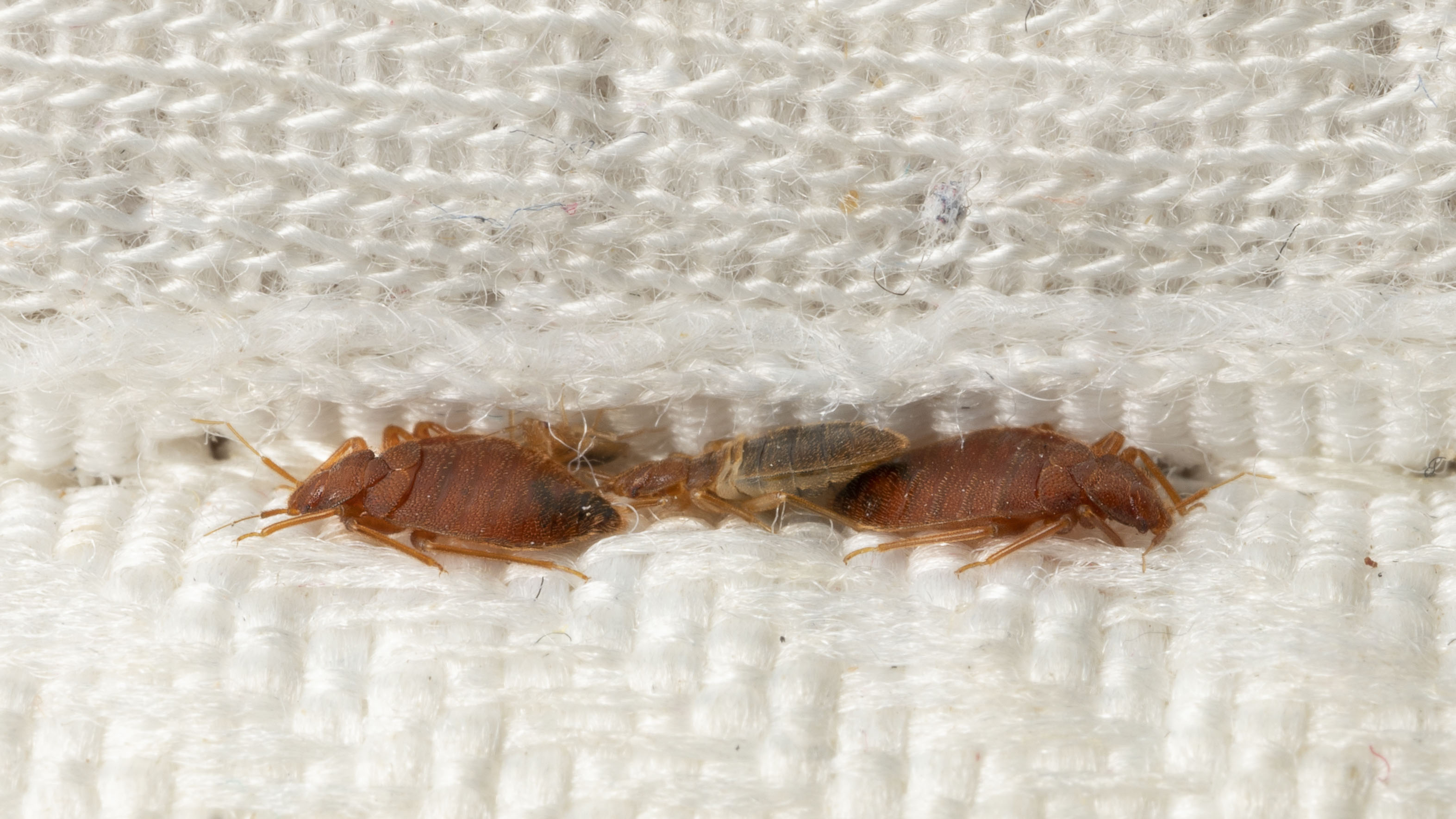Bed bugs vs dust mites: Which pest is living in your mattress?
Learn the signs of a potential bed bug vs dust mite infestation in your mattress

Wondering whether you have a bed bugs vs dust mites infestation in your mattress? if you wake up in the morning feeling run down, sniffly or you have itching skin, then it could be that you have some nocturnal guests visiting you at night. Bed bugs and dust mites are two of the most common pests that can set up camp within your mattress leaving you with sleepless nights and skin irritations.
But how do you tell the difference between bed bugs vs dust mites? Many of 2024's best mattresses are designed with hypoallergenic features to ward off dust mites (plus mold and mildew), but even these beds can fall foul to bed bugs so it’s important to know what to do if you have an infestation in your mattress.
For Sleep Awareness Week 2024, we walk you through everything you need to know about bed bugs and dust mites – how to spot them, how to get rid of them, and how you can keep them out of your mattress from the start.
What are bed bugs and what do they look like?
Bed bugs are small pests that feed on the blood of animals and humans. They are fond of mattresses and bed frames as provide warm, moist environments and bed bugs can easily hide within the seams to go undetected. Bed bugs also love the carbon dioxide humans emit during sleep, which is why they tend to come out more at night – you’ll be in one spot, breathing in and out and making it easy for them to find you in the bed.

Bed bugs are tiny, only growing to around just 5mm in length. They are flat, with an oval-shaped body, and are a reddish-brown color. Because of their small stature, it can be really hard to spot them, but if you suspect you do have bed bugs and you look carefully, then you may spot them running around on your mattress.
The problem with bed bugs is that while they are small, they are mighty. These minute pests can lay up to 250 eggs in a lifetime, so a small infestation in your mattress will quickly spread to other areas of your bedroom and beyond. T
here are plenty of tell tale signs that you have bed bugs in your home and while you won’t get any nasty diseases from bed bugs, they can cause major skin irritation, which if left untreated could get infected.
Get instant access to breaking news, the hottest reviews, great deals and helpful tips.
What are dust mites and can you spot them?
Dust mites are microscopic critters that like to feast on dead skin flakes shed by both humans and pets. So mattresses, pillows, sofas, and carpets are the perfect breeding ground.
Dust mites are so small that you won’t be able to see them with the naked eye, no matter how hard you look. They measure around 0.2 to 0.3 mm long and are about the same width as a strand of human hair. They also don’t have a very long life span, with male dust mites living just over a month whilst females can live up to 90 days.
You’ll know when you have dust mites around simply because of how you feel. Whilst dust mites won’t bite you but they can trigger some serious allergy and asthma symptoms such as sneezing, coughing, itchy eyes, and respiratory issues.

These symptoms will tend to get worse at night or if you live in a very dusty environment. So if you’re waking up each morning feeling as though you’ve got a mega cold or hay fever symptoms, it could be a telltale sign that you have dust mites in your mattress.
Bed bugs vs dust mites in mattresses: Key differences
Bed bugs and dust mites may seem like they’re similar but aside from being small creatures of the night that cause great distress, they’re pretty different.
One of the main differences lies within their appetite. Bed bugs like to feast on the blood of humans and animals whilst they sleep, whilst dust mites tend to feed on dead skin flakes that are shed by you or your pets so they don’t bite you directly.
The symptoms they leave humans with also differ. Bed bugs bite leaving behind red, itchy welts which are often in clusters. Whilst dust mites tend to trigger off allergy symptoms like sneezing, coughing, and itchy eyes.
And even though they are both tiny, bed bugs are actually visible to the naked eye. Bed bugs also leave behind telltale clues such as reddish-brown stains that could be from crushed bed bugs, shed skins and even tiny white eggs which you’ll usually see near the seams of the mattress. Dust mites however are microscopic so you won’t see them crawling around unless you have a microscope to hand.
Bed bugs vs dust mites: Your symptoms
The symptoms you experience when you have bed bugs differ to that from when you have a dust mite infestation so you should be able to quickly pinpoint which issue you’re dealing with.
Bed bugs bite you, so they leave their calling card on your skin in the form of raised, red itchy welts. These buses often appear in clusters or lines and you’ll notice them on exposed areas like arms, legs, ankles, shoulders, and backs. Whilst you won’t get any serious diseases from a bed bug bite, they may cause you to lose sleep because of the constant itchy feeling.

If you are experiencing itchy skin from bed bugs, it’s important to try not to scratch to avoid breaking the surface of your skin and possible infections. Instead put something cool on the area such as a damp cloth which will also help with any swelling. Keep the area clean and using essential oils such as tea-tree and peppermint mixed with a little coconut oil will heal the bites whilst offering cooling to stop the itching.
Dust mites don’t bite but they still pack a hefty punch. These microscopic bugs leave behind waste which then triggers allergy-like symptoms. You may notice a runny nose, sneezing, coughing as well as itchy watering eyes. Asthma sufferers also may find their symptoms are heightened. And in severe reactions, there could be difficulty breathing, chest tightness and trouble sleeping.
If you feel like you have any of these symptoms then first and foremost you should visit a doctor to rule out any other illness, but also start a strict cleaning regime to help you get rid of dust mites from your mattress, pillows and bedding.
Bed bugs vs dust mites in mattresses: Other tell-tale signs
When it comes to bed bugs v dust mites the battle can be a silent one. Aside from the physical symptoms that you may be experiencing, there are other things to look out for when it comes to determining which pest you have sharing your mattress with you.
Bed bugs will tend to leave behind rusty or reddish-brown stains on your bedding, that’s your mattress, sheets and pillowcases. These are likely from bed bugs that have been crushed by you whilst you move around at night or from their blood meals. As bed bugs grow they shed their outer skin, so you may find tiny brown or clear skins within the mattress seams, headboard or bed frame.

If you have a heavy infestation you may detect a must odor caused by the bed bugs. Bed bugs can also leave behind eggs, since a female can lay up to 250 eggs in their lifetime, whilst that may not sound a lot, they only live up to 90 days. Unhatched eggs are semi-transparent and can be found in clusters around the seams of your bedding.
Dust mites are a little harder to pinpoint. For a start, they are so small you’ll never see them running around. However, they do leave behind white specs, which are more visible on darker bedding. These are dust mite cases however, other allergens can also appear the same way so this isn’t a definitive sign that you have dust mites.
Bed bugs vs dust mites in mattresses: Where to find them
When it comes to the bed bugs vs dust mites battle, where you find these little creatures hanging out could be how you determine which ones you have.
Bed bugs really love mattresses, bed frames and headboards. Of course, this is mostly down to that’s where their favorite meal hangs out. Bed bugs tend to hide out in the seams and crevices of the mattress, they can get deep down inside and remain unseen. The space in between the mattress and headboard is another favorite, because it’s dark, and they’re unlikely to be disturbed.
Bed bugs don’t just love mattresses, they can also find their way into other upholstered furniture like sofas and chairs. And if you’re a regular traveling, then beware of bringing these little hitchhikers back. They can easily hide in your luggage and make a new life for themselves back at your place.

Dust mites are also everywhere. They do love mattresses in particular because it’s warm, humid and if its not regularly cleaned, there’s plenty of dead skin flakes for them to feast on. Just like your pillows, these are a prime spot for dust mites to gather. Dust mites can also be found in carpets, upholstered furniture and stuffed toys, especially if your home has high humidity levels.
The main difference between bed bugs vs dust mites is that bed bugs will hang out where they can access food easily so your bed and furniture are prime spots. Where as dust mites focus on dead skin cells which if not cleaned properly could be anywhere in your living space.
How to protect your mattress from bed bugs and dust mites
Investing in a mattress encasement and encasements for your pillows will help ward off bed bugs and dust mites. These encasements should be made from tightly woven fabric with allergen-proof properties.
This will not only trap existing bed bugs within the mattress, stopping them from being able to feed on your and lay more eggs and eventually causing them to die, it will also stop new bed bugs from being able to get in the mattress. You may be tempted to go for a mattress protector, and that’s fine if your only issue is dust mites, but for bed bugs a full encasement is the only way.
Reducing humidity levels in your home will take away that warm, moist environment dust mites love
Also, start a regular cleaning routine. Wash your bedding on a hot cycle weekly to remove dead skin and dust mites. Once your bedding has been stripped and in the washing machine, vacuum your mattress thoroughly, paying extra attention to the seams and edges where both bed bugs and dust mites like to hide. This will get rid of also remove dead skin, their source of food.
You may also want to invest in a dehumidifier if your bedroom has high humidity. Reducing humidity levels in your home will take away that warm, moist environment that dust mites love.
When it comes to bed bugs, it’s also worth getting into a routine being vigilant when you travel. Sleeping in hotels or Air BnBs, for example, can leave you at risk of bedbugs – and those little critters love to travel. When you check in to a new place to stay, check the mattress thoroughly for signs of bed bugs and call reception if you're concerned.

Rachael has a keen interest in all things sleep, including her expert knowledge on mattress cleaning, providing readers with the best hacks and tips to keep their beds clean, as well as trying out the latest viral cleaning products. Rachael also reports on leading mattress brands such as Helix, Saatva and Nectar, writing articles designed to help readers understand what they need from a new bed. She also enjoys reviewing home, travel and tech gadgets, especially anything that has been designed to make life easier like smart home gadgets. During the last 15 years, Rachael has contributed to various publications including Tom’s Guide, Creative Bloq, The Independent, The Spectator, Daily Express and more.
